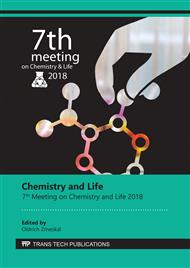p.20
p.25
p.31
p.37
p.44
p.50
p.56
p.62
p.68
Development of High-Compressive Heavyweight Concrete Based on Portland Cement and Supplementary Cementitious Materials
Abstract:
The manufacture of optimized heavyweight concrete takes into consideration the type of aggregates, composition of blended cement, water-to-cement ratio, additives etc. The density of concrete depends mainly on the specific gravity of the used aggregates. Generally, concretes with specific gravities higher that 2600 kg m-3 are called heavyweight concretes and aggregates with specific gravity higher than 3000 kg m-3 are considered as heavyweight aggregates according to EN [1,2]. Concrete is a low cost material and easy to produce in varied compositions when compared to other shielding materials based on ceramics [3]. It is composed of a well-proportioned mixture of light and heavy nuclei. It is therefore efficient both in absorbing gamma rays and in slowing down fast neutrons by elastic and inelastic scattering [2]. Light materials, especially hydrogenous materials which contained in the water of hydration of the set cement (concrete) attenuate fast neutrons as a consequence of the high cross-section of hydrogen [4].
Info:
Periodical:
Pages:
44-49
Citation:
Online since:
May 2019
Authors:
Keywords:
Price:
Сopyright:
© 2019 Trans Tech Publications Ltd. All Rights Reserved
Share:
Citation:


